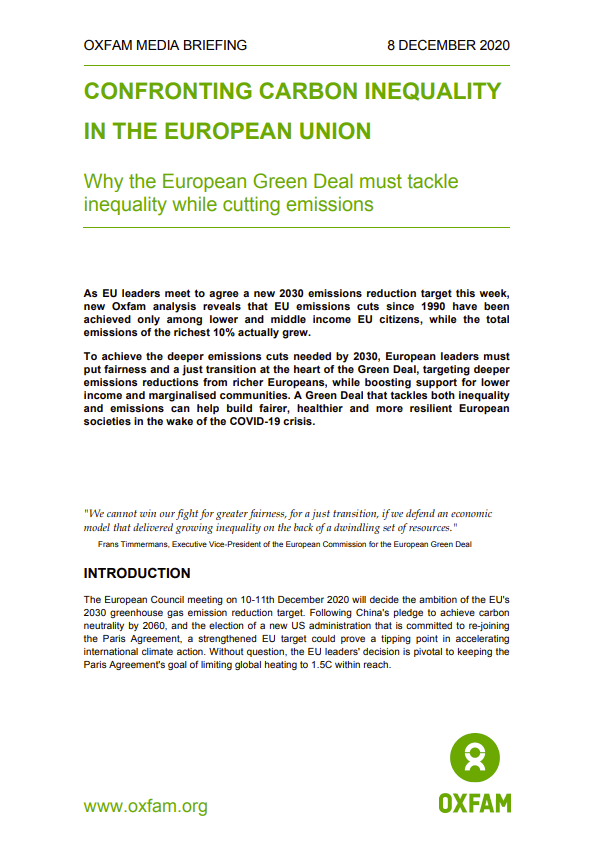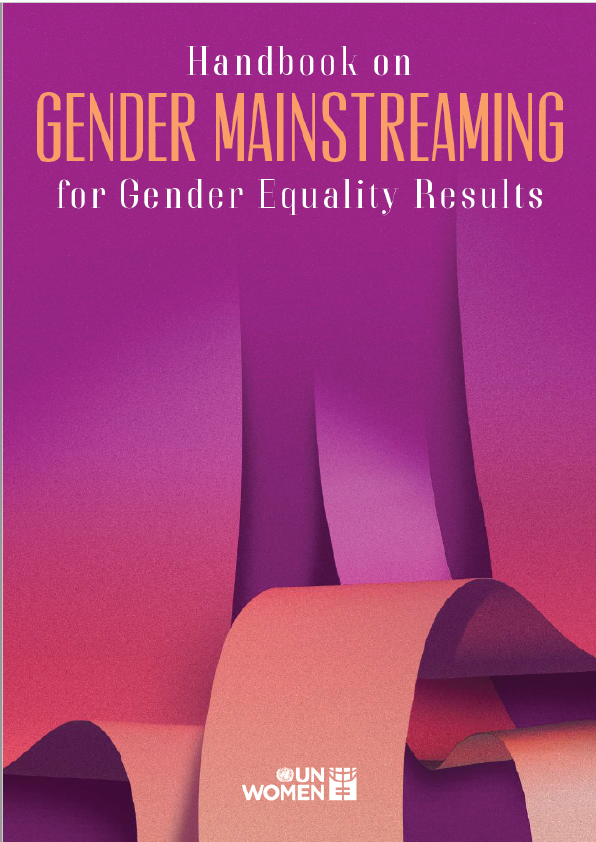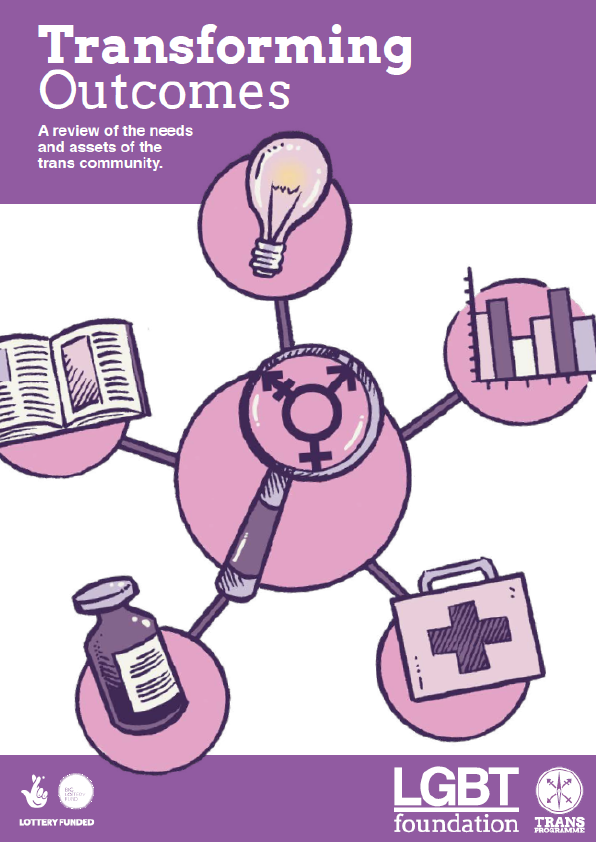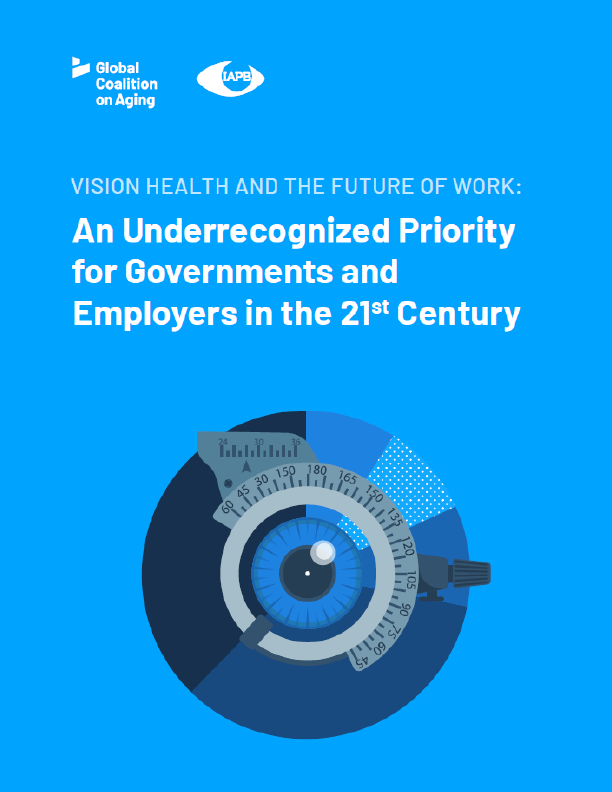Confronting carbon inequality in the European Union
Why the European Green Deal must tackle inequality while cutting emissions
New Oxfam analysis reveals huge carbon inequality in Europe: EU emissions cuts since 1990 have been achieved only among lower and middle income EU citizens, while the total emissions of the richest 10% actually grew.
To achieve the deeper emissions cuts needed by 2030, European leaders must put fairness and a just transition at the heart of the Green Deal, targeting deeper emissions reductions from richer Europeans, while boosting support for lower income and marginalised communities. A Green Deal that tackles both inequality and emissions can help build fairer, healthier and more resilient European societies in the wake of the COVID-19 crisis.
This paper builds on Oxfam’s earlier work with Stockholm Environment Institute to assess global carbon inequality, which you can read here and here. You can access the full dataset behind the analysis here.
INTRODUCTION
The European Council meeting on 10-11th December 2020 will decide the ambition of the EU’s 2030 greenhouse gas emission reduction target. Following China’s pledge to achieve carbon neutrality by 2060, and the election of a new US administration that is committed to rejoining the Paris Agreement, a strengthened EU target could prove a tipping point in accelerating international climate action. Without question, the EU leaders’ decision is pivotal to keeping the Paris Agreement’s goal of limiting global heating to 1.5C within reach.
The Paris Agreement often referred to as the Paris Accords or the Paris Climate Accords, is an international treaty on climate change, adopted in 2015. It covers climate change mitigation, adaptation, and finance. The Agreement was negotiated by 196 parties at the 2015 United Nations Climate Change Conference near Paris, France.
The European Commission has tabled an emission cut of 55% below 1990 levels by 2030, while the European Parliament voted in favor of a 60% cut. Neither is sufficient compared to the lowest risk emissions pathways aligned with the 1.5C goal assessed by the Intergovernmental Panel on Climate Change (IPCC). These imply EU reductions of at least 65% below 1990 levels by 2030 based on global average emissions cuts from today, and even higher to be consistent with the Paris Agreement’s equity principle, which implies signatories with greater emissions responsibility and financial capacity should lead global mitigation efforts.
But one thing is clear: it will only be possible to agree and achieve deeper reductions by 2030 if equity and fairness are put at the heart of the transition to a new European economy. New Oxfam analysis of consumption emission estimates developed with the Stockholm Environment Institute (SEI)4 shows why addressing carbon inequality in the EU is key to strengthening climate ambition. It reveals that in the 25 years between 1990 and 2015, in which the EU’s consumption emissions fell by around 12%, while income inequality increased across Europe:
• The EU was collectively responsible for 15% of global cumulative consumption emissions – while being home to just 7% of the world’s population;
• The richest 10% of EU citizens were responsible for over a quarter (27%) of these EU emissions, the same amount as the poorest half of the EU population combined;
• The total annual consumption emissions of the poorest 50% of EU citizens fell by 24%, and those of the 40% of EU citizens with ‘middle incomes’ by 13%, while the emissions of the richest 10% grew by 3%, and of the richest 1% by 5%;
• Today, the richest 10% of EU citizens have a per capita footprint over 10 times higher than the level needed by 2030 for a 1.5C-consistent emissions pathway, while the footprint of the richest 1% is 30 times higher. By contrast the footprints of the poorest 50% of Europeans will need on average to be halved by 2030.
Since 1990, EU emissions cuts have occurred in the context of growing economic inequality6 – but now that must change. In order to achieve the much deeper cuts needed by 2030, it is vital that EU policy measures do more to tackle the emissions associated with the richest, highest emitters in Europe, while also supporting the livelihoods of poorer citizens in a just transition. This means tackling carbon inequality both between richer and poorer EU member states and within EU Member States.
The right policies can bring multiple benefits beyond tackling the climate crisis, such as creating decent jobs in low carbon sectors, cutting energy bills for low income households, and improving air quality and public health. By re-orienting the European Green Deal to tackle inequality as well as cutting emissions, it can help build fairer, healthier and more resilient EU societies in the wake of the COVID-19 pandemic.











